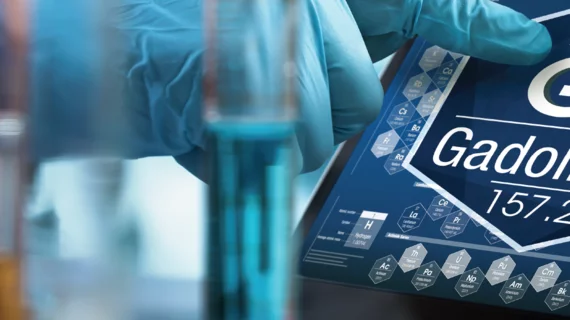How AI could limit gadolinium use when treating MS
Deep learning (DL) can predict and enhance MS lesions on unenhanced MRI scans, according to a new study published in Radiology. These findings suggest MS patients may someday be treated without the use of gadolinium-based contrast agents (GBCAs).
“There are concerns about GBCA administration, including nephrogenic systemic fibrosis in patients with renal compromise and long-term gadolinium deposition in various tissues,” wrote lead author Ponnada A. Narayana, PhD, MSc, University of Texas Health Science Center in Houston, and colleagues. “This is particularly a concern in patients with MS, who undergo frequent imaging with GBCA administration for regular clinical follow-up, which may result in higher cumulative gadolinium deposition in tissues.”
The team’s DL model included two networks, a convolutional neural network (CNN) that scanned all 2D slices for possible contrast enhancement and a fully connected network that created a participant-wise prediction.
The authors then performed a prospective analysis of MRI data from more than 1,000 adult patients with relapsing-remitting MS who were recruited to participate in a multicenter phase III clinical trial from 2005 to 2009. Sixty-eight different facilities contributed to the original dataset.
Overall, at least one enhancing lesion was detected in 519 study participants. Averaging a total of five test sets, Narayana et al. wrote that the sensitivity of their model for slice-wise prediction was 78% and the specificity for slice-wise prediction was 73%. The sensitivity and specificity for participant-wise prediction were 72% and 70%, respectively.
“The reduced accuracy for participant-wise prediction (70% compared with slice-wise accuracy of 75%) is not surprising; errors in slice-wise predictions are amplified and may completely alter the prediction of patients without enhancing lesions (resulting in a false-positive result) or patients with a single enhancing lesion (resulting in a false-negative result),” the authors explained.
Also, the average area under the ROC curve (AUC) for slice-wise prediction was 0.82. For participant-wise prediction, the AUC was 0.75. These findings, the team wrote, show that DL could someday make the use of GBCAs for the identification of enhancing lesions unnecessary—but more work still needs to be done.
“It is anticipated that inclusion of other MRI sequences could further improve DL performance,” the authors concluded. “This will be necessary before DL is accepted as a viable alternative to GBCAs for identifying enhancing lesions in MS.”

